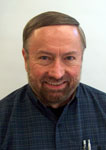- unknown (b.)
Bio/Description
A retired IBM Fellow (1996), he was with IBM for over 43 years, from May 1968 to January 2012. He joined IBM as a programmer in the 1960s just as the mainframe giant was inventing virtualization. While he didn't invent virtualization, he has played a key role in advancing the technology over the past four decades. When he joined IBM on a full-time basis he was working on an experimental time-sharing system, a separate project that was phased out in favor of the CP-67 code base which he said, ?was more flexible and efficient in terms of deploying VMs for all kinds of development scenarios, and for consolidating physical hardware.? A graduate of Massachusetts Institute of Technology MIT in Electrical Engineering and Computer Science, he worked for IBM in Cambridge until 1974, when he transferred to the Poughkeepsie, N.Y., lab, where he stayed for two decades. In the early 1990s, he helped develop Parallel Sysplex, an IBM technology that lets customers build clusters of as many as 32 mainframe systems to share workloads and ensure high availability. In 1994, he transferred to IBM's lab in Austin, Texas, as part of an effort to bring mainframe technology and expertise to IBM Power systems. He also worked with IBM's Tivoli software team to develop architectures that led to more dynamic and responsive data centers. In 1999, he was also one of the lead designers of Processor Resource/System Manager, which let users logically slice a single processor into multiple partitions - hypervisor for IBM's Power-based servers. He was also a Chief Virtualization Technologist where he used CP-67 software, one of IBM's first attempts at virtualizing mainframe operating systems. He recalls, ?CP-67 and its follow-ups launched the virtualization market, giving customers the ability to greatly increase hardware utilization by running many applications at once.? The partitioning concepts IBM developed for the mainframe eventually served as inspiration for VMware, which brought virtualization to x86 servers in 1999. The future of technology always has roots in the past. And the past is indeed long in the case of virtualization, a technology that is reshaping today's IT industry and will likely play a huge role in the building of next-generation data centers.
-
Noted For:
Key role player in advancing virtualization technology -
Category of Achievement:
-
More Info:


